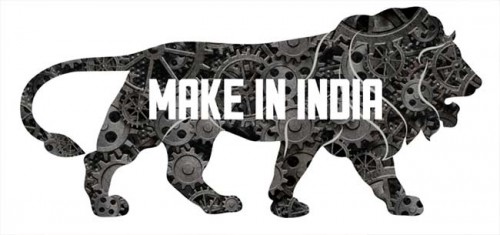
Prime Minister Narendra Modi’s new symbol for industrial India is a majestic lion. The vision document for ‘make in India’ aired on the net, displays this wonderful creature as a logo. This big cat is obviously Indian but it was born and grew up in Gujarat, the state that has given us Modi. This logo of the lion used in the document has a veiled message Modi wants to convey to the world. He epitomizes the roaring lion that always commands and wins.
He is asking us, by his call, to forget the days of the lumbering elephant, the symbol associated with a sluggish economy during pre-reform India. Many economists like to describe India’s progress during the late 1960s and 70s as the Hindu growth rate. They liken the Hindu growth rate with a sleeping elephant that could wake up, move fast and could assert itself but did not. The elephant was shackled with chains of control, permits, import substitution and an archaic world view about global interconnectedness.
Modi’s call to global investors to make in India certainly arouses enthusiasm but will it translate to action? He proclaims India’s 3D advantages: democracy, demography and demand. But how do the global investors perceive India as investment destination? The World Bank has recently laid bare some indigestible facts about India. The bank every year prepares a list of countries and ranks them on ‘Ease of Doing Business’. The best investment destination tops the list. India is ranked 134th in the present list. Modi’s call may fall on deaf ears of the global manufacturers if their perceptions about India do not improve.
India’s manufacturing sector grew at 4.2 per cent in the past four years. Its share in GDP had declined to 14.9 per cent in 2013- 2014 from a peak level of 16.2 per cent in 2009-2010. Manufacturing sector must grow fast to turn India into a global manufacturing hub.
Modi has pledged that all barriers to flow of investment would be removed within a short time. He claims a favourable condition for investment in India as his predecessors also did. Domestic demand is enormous because the Indian middle class, blessed with improved purchasing power, has been expanding. Demographic dividend is on its way to pay us and India’s democracy has come a long way. So Modi is upbeat and he makes us feel good.
Boosted by the Chinese success story he is determined to make use of these favourable conditions in India. China, our giant eastern neighbour, has succeeded in building its manufacturing sector that contributes one-third to the GDP compared to India’s 15 per cent. The share of Indian manufacturing in the world market is a measly 1.4 per cent compared to Chinese share of 13 per cent.
Twenty years ago, Chinese share was only 2.9 per cent. It is true that global companies went to China for cheap labour in the beginning but they stayed back and proliferated because of supply chain efficiencies, backward and forward linkages and ease of business. Unfortunately Modi’s 3D advantages and his dream to usher in India as the world’s manufacturing hub will bear no fruit unless 4Ps of disadvantages are not addressed immediately.
These four Ps relate to power, ports, people and policy. Manufacturing units are crippled by power shortage. Modi must focus on generation and uninterrupted supply of clean and green electricity. Secondly, modern ports, both sea and air, must be linked with well-laid surface transport system across the length and breadth of the country.
The third disadvantage relates to people who would work in manufacturing units. Modern manufacturing runs on science and technology, research and development, new processes, precision technology, innovation and skill. Demographic dividend, expected to stem from our huge reserve of youth population, sounds good but how many of have the skills to take up modern manufacturing jobs? Our universities are producing thousands of unskilled graduates every year.
The FICCI document called “Higher Education in India: Vision 2030 reveals that 75 per cent of India’s IT graduates are unemployable. The same document further brings to light that 55 per cent of engineering graduates, 55 per cent of medical graduates and 50 per cent of management graduates are unemployable in their respective job areas. The government must immediately ponder over the quality of education. Education-industry linkage needs to be built in schools and college. Young learners should be exposed to current trends and requirement for industries. Thus the size of working age population does not matter; it is the size of skilled workers that does matter.
The fourth disadvantage relates to policy. It encompasses land acquisition policy, tax regime, labour laws, law and order, safety and security, end of bureaucratic red-tapism and environmental sustainability. Government must strike a balance between serving the interests of India’s ‘aam admi’ and laying the red carpet for investors.
Before industrialists invest in India’s manufacturing sector, the Modi government must invest its time, energy and resources in removing these bottlenecks that stifle India’s manufacturing. Or else, the lion’s roar will at best be a whimper.